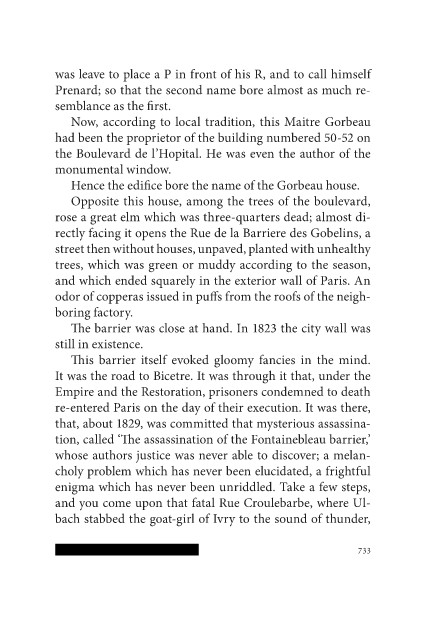Page 733 - les-miserables
P. 733
was leave to place a P in front of his R, and to call himself
Prenard; so that the second name bore almost as much re-
semblance as the first.
Now, according to local tradition, this Maitre Gorbeau
had been the proprietor of the building numbered 50-52 on
the Boulevard de l’Hopital. He was even the author of the
monumental window.
Hence the edifice bore the name of the Gorbeau house.
Opposite this house, among the trees of the boulevard,
rose a great elm which was three-quarters dead; almost di-
rectly facing it opens the Rue de la Barriere des Gobelins, a
street then without houses, unpaved, planted with unhealthy
trees, which was green or muddy according to the season,
and which ended squarely in the exterior wall of Paris. An
odor of copperas issued in puffs from the roofs of the neigh-
boring factory.
The barrier was close at hand. In 1823 the city wall was
still in existence.
This barrier itself evoked gloomy fancies in the mind.
It was the road to Bicetre. It was through it that, under the
Empire and the Restoration, prisoners condemned to death
re-entered Paris on the day of their execution. It was there,
that, about 1829, was committed that mysterious assassina-
tion, called ‘The assassination of the Fontainebleau barrier,’
whose authors justice was never able to discover; a melan-
choly problem which has never been elucidated, a frightful
enigma which has never been unriddled. Take a few steps,
and you come upon that fatal Rue Croulebarbe, where Ul-
bach stabbed the goat-girl of Ivry to the sound of thunder,
733

